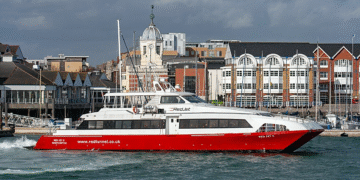Funerals serve as both a farewell and a celebration—an opportunity to honour the life of someone dear while helping friends and family begin the healing process. In 2025, funerary traditions continue to evolve in response to shifting cultural values, environmental concerns, and technological advancements. From intimate home services to large communal gatherings, today’s funerals offer a spectrum of options that blend tradition with personalization. This guide will walk you through key considerations, emerging trends, and practical tips for planning a meaningful send-off.
Understanding Funeral Options
The first step in funeral planning is understanding the core choices available: burial, cremation, and hybrid memorials. Traditional burials remain meaningful for many, offering a permanent gravesite for visitation. Cremation, once considered alternative, is now mainstream—accounting for a majority of services in the UK and beyond—offering flexibility in memorialization, scattering, or keeping ashes in an urn. Hybrid services combine elements: a burial followed by a separate ashes interment, or a cremation preceded by a burial-style ceremony. Each option carries its own logistical, emotional, and financial considerations; weighing these early helps align the service with personal values and budget.
The Rise of Eco-Friendly Farewells
Environmental awareness has reshaped funeral planning, giving rise to green funerals that minimise ecological impact. Options include biodegradable coffins made from wicker or bamboo, natural woodland burials without embalming, and tree-planting memorials. Green crematoria use energy-efficient furnaces and capture emissions, while some providers offer carbon-offset programmes. Families are increasingly selecting local venues to reduce travel footprints, choosing seasonal flowers from nearby growers, and avoiding single-use printed materials in favour of digital invitations. An eco-friendly send-off not only reflects respect for the planet but can also ease decision-making by adhering to clear sustainability principles.
Direct Cremations: Practical and Affordable Goodbyes
For those seeking a simple, dignified service without the added cost of ceremonial extras, Direct cremations have become an increasingly popular choice. In a direct cremation, the deceased is respectfully transported, cared for, and cremated without a formal onsite service or viewing. Families may choose to hold their own private memorial at a later date—at home, in a community hall, or at a scattering site—tailoring the tribute to their unique preferences. Direct cremations typically cost a fraction of a traditional funeral, eliminate venue and catering expenses, and provide flexibility in how and when to honour the departed.
Personalized Memorial Services
Even when opting for simpler core arrangements, personalization remains essential. Memorial services now incorporate multimedia tributes—slide shows, video montages, and voice recordings—to convey the essence of a life lived. Custom playlists, live-streamed eulogies for remote attendees, and themed décor (favourite colours, treasured photographs) add intimacy. Some families commission bespoke art installations or memory tables where guests can leave written reflections. Whether hosted immediately after a service or scheduled on a significant date months later, personalized gatherings ensure that the ceremony resonates deeply with those who knew the deceased best.
Technology and Virtual Tributes
The digital transformation of funerals accelerated in recent years, and virtual tributes remain a vital option in 2025. Livestreaming platforms enable distant relatives and friends to join ceremonies in real time, while dedicated memorial websites allow guests to share stories, upload photos, and sign virtual guestbooks. Augmented reality experiences can overlay historical images at gravesites, and QR code-embedded headstones link visitors to multimedia biographies. Technology broadens access and extends the life of memorials, creating collective spaces for remembrance that endure well beyond the service itself.
Financial Considerations and Budgeting
Funeral costs can vary widely—from a few hundred pounds for a direct cremation to several thousand for a full-service burial with catering and printed materials. When planning, obtain itemised quotes that break down professional fees, facility charges, transportation, and third-party costs (flowers, stationery, obituary notices). Consider package pricing versus bespoke selections, and watch for hidden add-ons like VAT on certain services. If funds are limited, explore charitable grants, local council support schemes, or funeral payment assistance for those on low incomes. Transparent budgeting and early comparison shopping can prevent unexpected financial strain during an already emotional time.
Pre-Planning and Funeral Insurance
Taking control before a bereavement strikes can ease the burden on loved ones. Funeral pre-planning involves specifying service preferences, selecting providers, and freezing costs at today’s rates. Many funeral directors offer pre-paid plans or insurance policies that cover the anticipated expenses—guarding against future price inflation. While not mandatory, pre-planning provides peace of mind, ensures personal wishes are honoured, and spares family members from making difficult decisions under stress. Be sure to review any plan’s terms, cancellation policies, and provider accreditation to guarantee reliability.
Supporting Loved Ones and Grieving
Beyond logistical arrangements, a funeral’s primary purpose is to facilitate healing. Encourage open conversations about grief, offer clear information about what to expect on the day, and create safe spaces for emotional expression. Provide printed or digital handouts with grief-support resources, such as counselling services and local support groups. For inclusive ceremonies, consider quiet rooms for those needing respite, sign-language interpretation, or sensory-friendly elements. In the weeks following the funeral, check in on family and friends; simple gestures—a meal delivery, a shared walk—can make a profound difference in navigating grief’s complex journey.
Conclusion
Planning a funeral touches on practical, emotional, and cultural dimensions. In 2025, an array of choices—from eco-friendly green burials to streamlined direct cremations—empowers families to design services that truly reflect their values and the personality of the departed. By understanding available options, personalizing memorials, leveraging technology, and addressing financial considerations, you can create a dignified farewell that honours life and supports the healing process. Whether orchestrating every detail or opting for a simple, heartfelt tribute, the ultimate goal remains the same: to say goodbye with compassion, respect, and intention.













